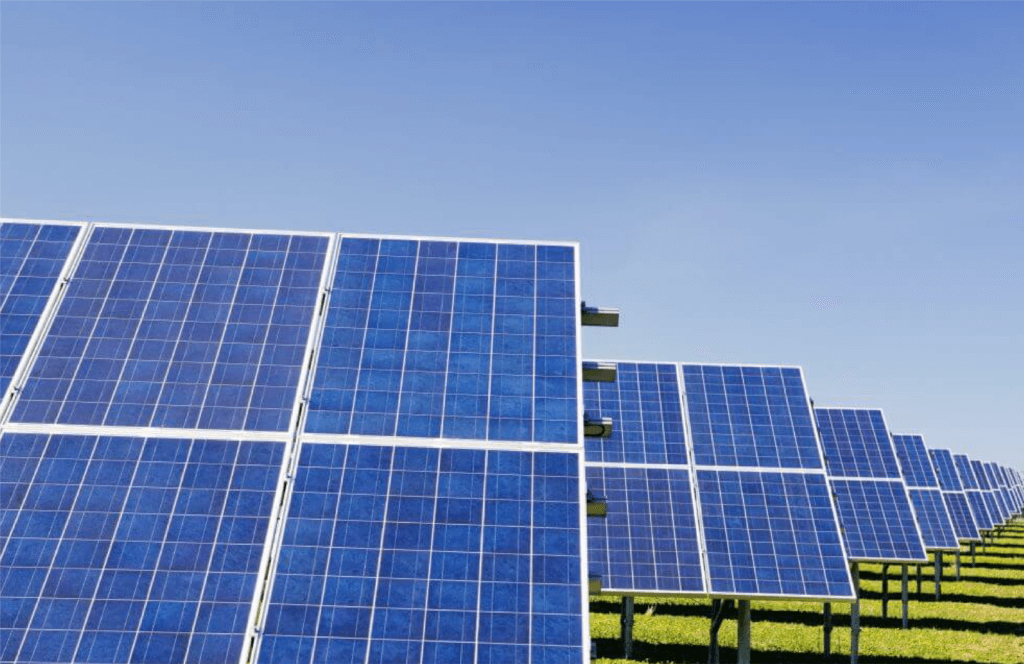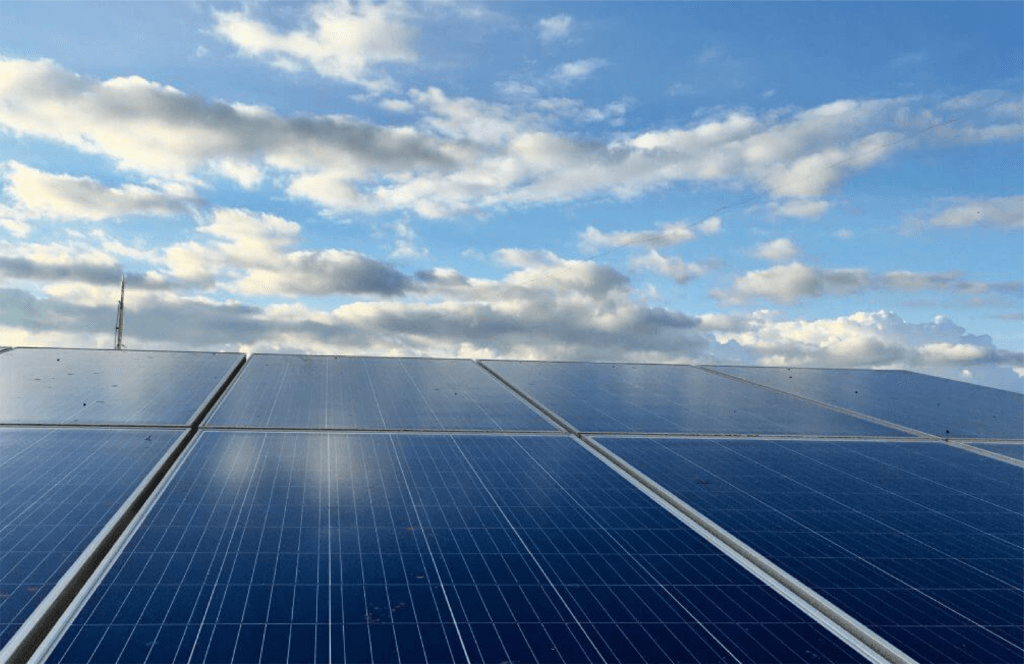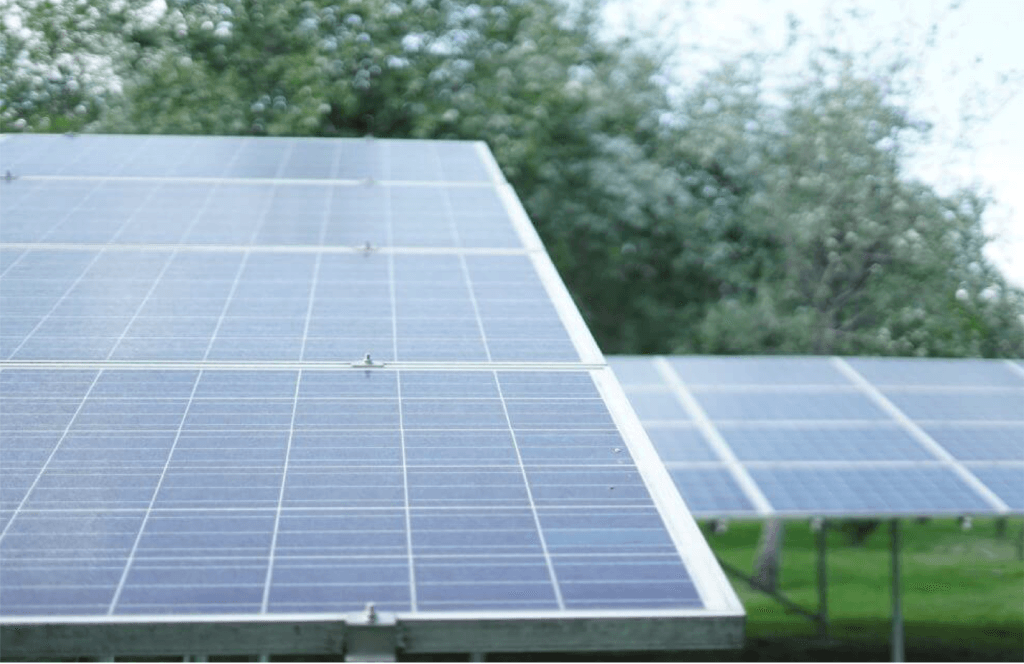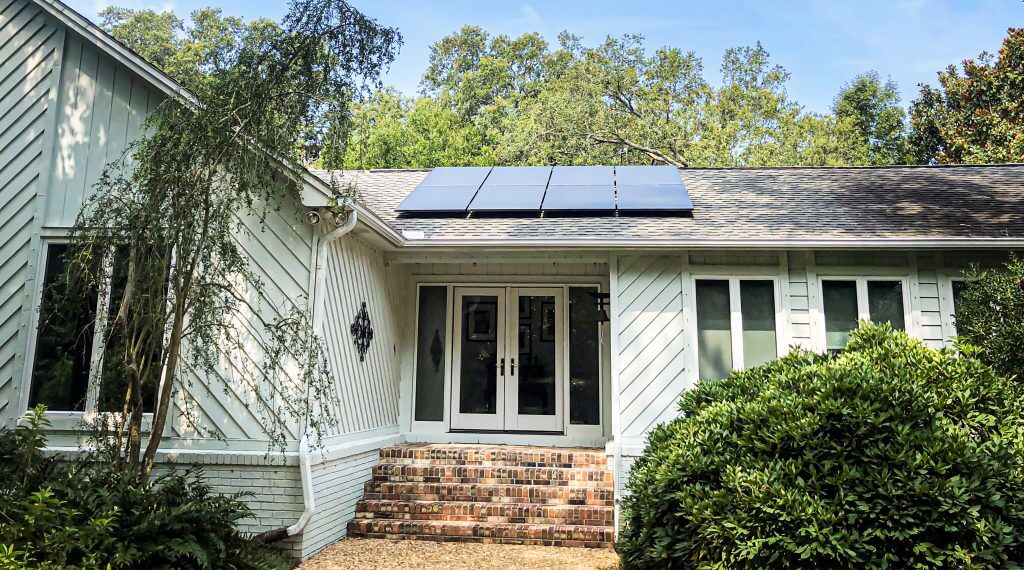


At SunFarm Energy, we pride ourselves on being your local solar experts. That means we’re constantly on the lookout for new technology and trends so we can provide you with the best service. But sometimes, we know it’s important to get back to the basics. Ever wondered how solar panels actually work? How about the different pieces of a solar PV system? Brush up on your knowledge below with some Solar 101.
How Do Solar Panels Work?
At their most basic level, solar panels work by converting light into electricity.
Your panels are made to capture photons – tiny particles of energy found in sunlight. When the sun hits the panel, the material inside absorbs the photons. Most solar panels are made from silicon, a key ingredient in modern electronics.
When the photons from sunlight hit your panels, they excite the electrons inside the silicon’s atoms until they start to dart around and break away. This creates an electric current called direct current or ‘DC’ that eventually powers your home – but we have one more crucial step first.
Panels also contain copper wiring, which acts as a pathway for the current. The DC travels along this pathway through a device called an inverter. The inverter changes the DC to alternating current or ‘AC’ – now we’re ready for in-home use.
The converted AC passes through your breaker boxes and into your outlets. When your system produces more energy than you can use, excess energy returns to the grid for use elsewhere.
Interested in taking a deeper dive? Learn more about the science behind photovoltaics.
What Components Make Up a Solar PV System?
Your solar PV system consists of 3-4 main components. The first is a mounting/racking system. We mount this series of flashing, feet, and racking bars to your roof, which holds your entire PV system in place. At SunFarm Energy, we attach racking systems directly to the trusses of a roof to maximize stability.
Your PV panels make up the second component of your system. You may also hear your panels referred to as modules.
The third piece is an inverter, which helps convert DC to AC power. Without the inverter, the electricity your panels produce wouldn’t be usable in the home. There are a few different types of inverters:
String Inverters
A string inverter system connects multiple solar panels together in an array. String inverters deliver the lowest cost of energy over time, have an improved lifetime value, and contribute to a simpler system design. With a string inverter system, you can also monitor your solar production and track your system’s energy output.
Microinverters
Microinverters are another option for system design. Each microinverter is individually paired with a solar module and allows for optimal kWh yield and independent operation. Microinverters provide panel-level monitoring, allowing you to see panel performance on a more granular level.
Power Optimizers
Both types of inverter systems can be paired with optimizers which ensure that each solar module performs as efficiently as possible.
Battery Storage
Battery storage is the final component to consider when designing your system. Adding battery storage maximizes the use of your solar power system, provides energy independence, and ensures energy security for you and your family. A battery storage system works by storing excess energy from your solar power system for use at a later time. That could be during evening hours when the sun isn’t shining, or during an outage or storm. With a battery storage system, you can keep the lights on – and more! – when it matters most.

What are the Different Types of Solar PV Systems?
Grid-Tied Solar
With a grid-tied solar PV system, you’re reaping the benefits of producing your own power, and sending it back to the grid. Any time your system produces energy that you don’t use, you receive a credit from your power company.
Interested in saving money on your power bill and achieving energy independence? Consider a grid-tied system. While you may still pay a small connection fee to your utility, and your power consumption will fluctuate in warm vs. cooler months, your solar PV system significantly reduces your power bill, and sometimes makes it disappear completely. However, keep in mind that grid-tied solar cannot be used during an outage.
Grid-Tied with Battery Backup
With battery storage, excess energy produced by your system is available when you need it most. If you experience an outage, that stored energy can keep your essentials going until the power comes back on. Think of your battery storage system like a generator but without the gas – and the noise! During the daytime, your solar PV system keeps your battery charged.
Produce your own energy and save more money by adding a battery backup system to your solar PV array. Grid-tied battery backup not only provides true energy independence it also provides a sense of security in case of an outage.
Off-Grid with Battery Backup
If you’re interested in ditching your utility, solar plus storage offers options for a completely off-grid lifestyle. This system works just like a solar plus storage option but isn’t connected to the grid, which means means full energy independence. Off-grid battery backup makes a great solution for remote hunting camps, cabins, and or even whole home power.
What is Net Metering?
You’ve heard us talk a lot about grid-tied solar and sending excess energy back to the grid, but did you know? In Florida, you can get a monetary credit for that excess energy from your utility company.
Net metering allows solar customers to receive a monetary credit for any excess energy they produce and send back to the grid. Most solar PV systems produce more energy than a home can typically use – with exceptions in particularly hot or cold months. Any excess energy sent to the grid returns to the customer in the form of a credit on their next power bill.
Just like you pay to receive energy from the grid, your utility pays you to utilize the excess energy you’re producing. Seems only fair, right? This means that by switching to solar, you can see savings reflected on your overall power bill, and in the form of credits via net metering.